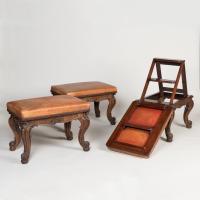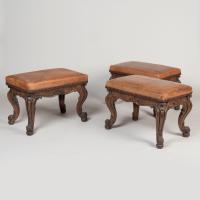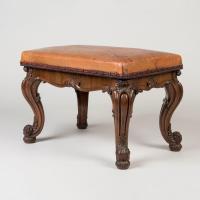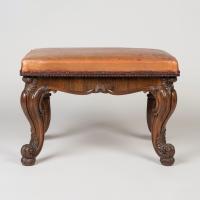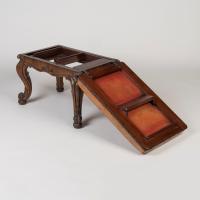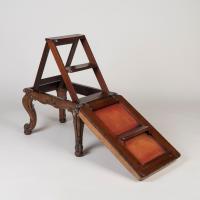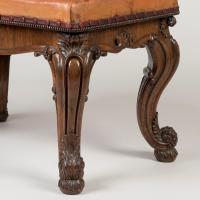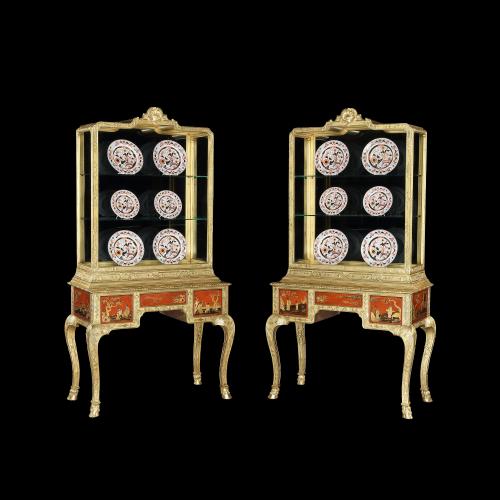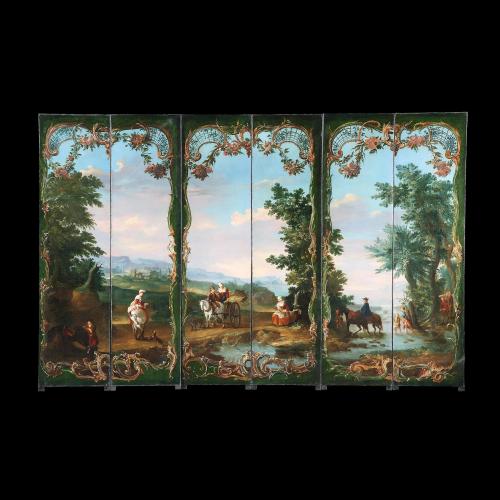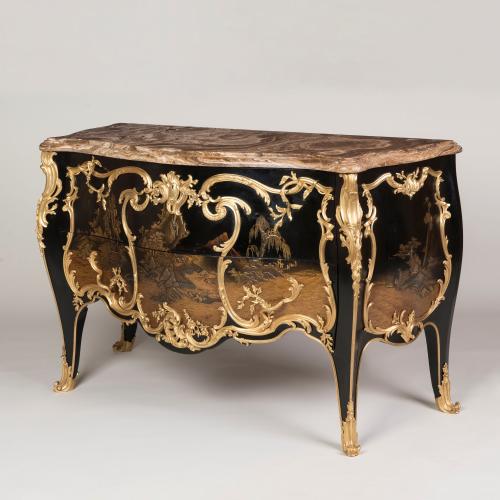
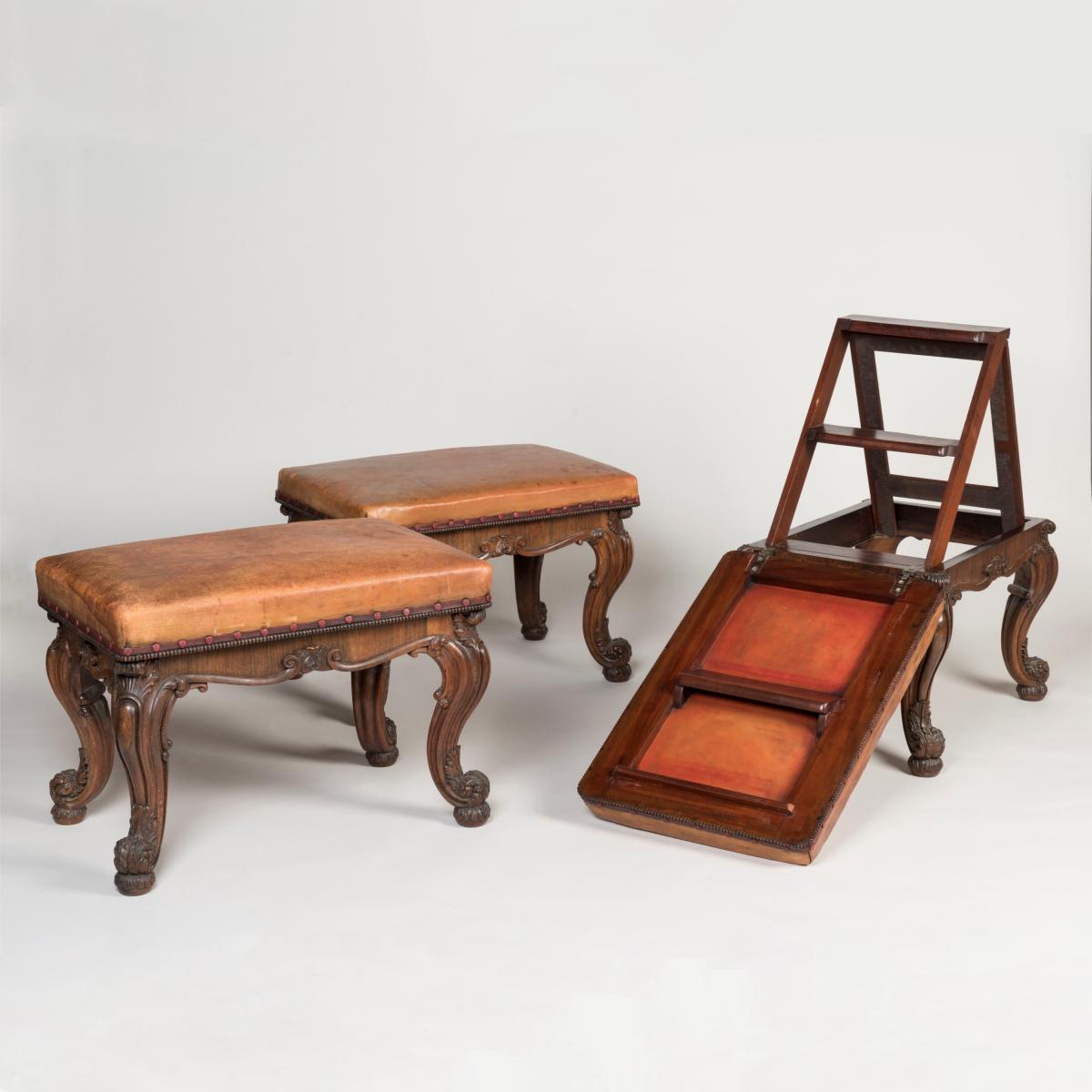
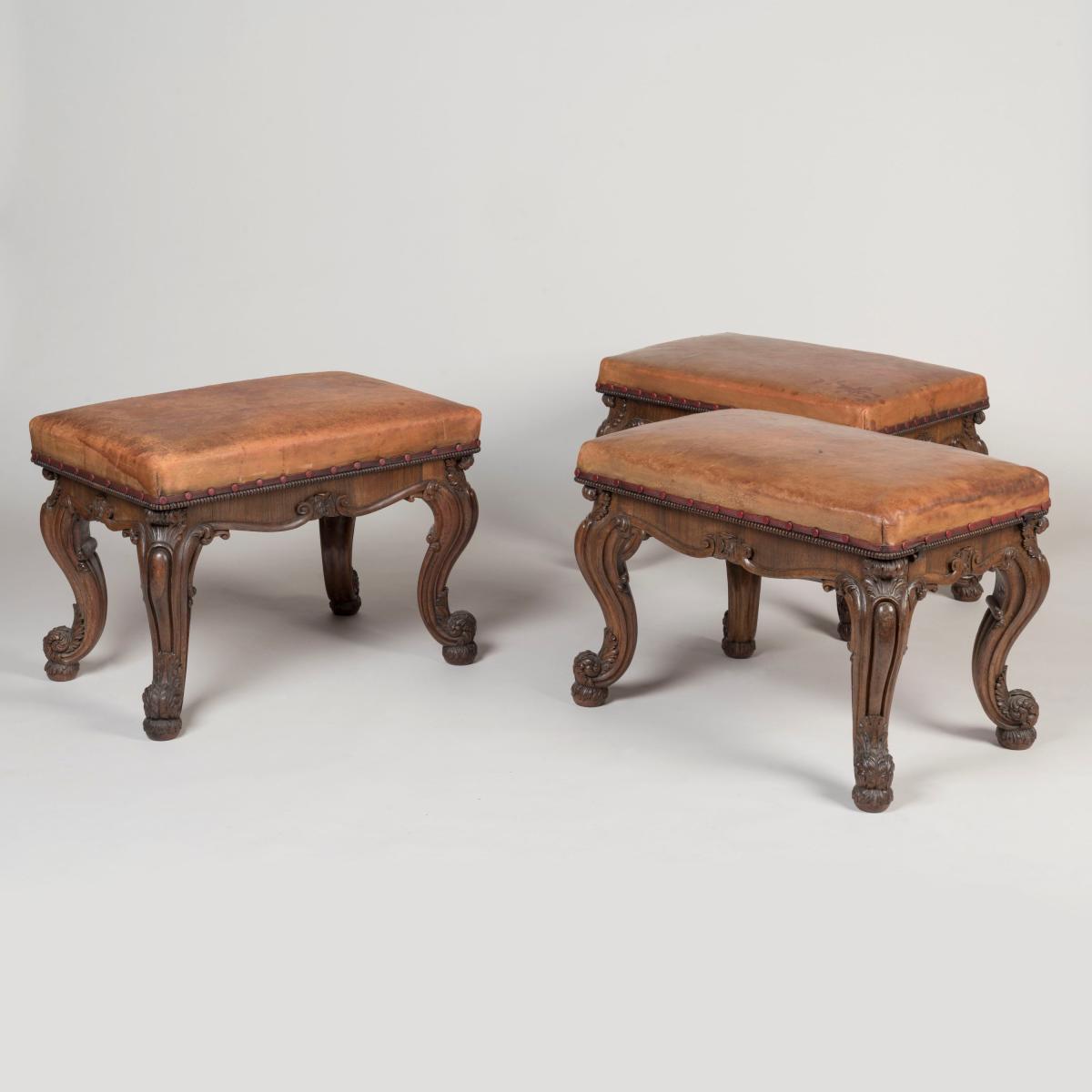
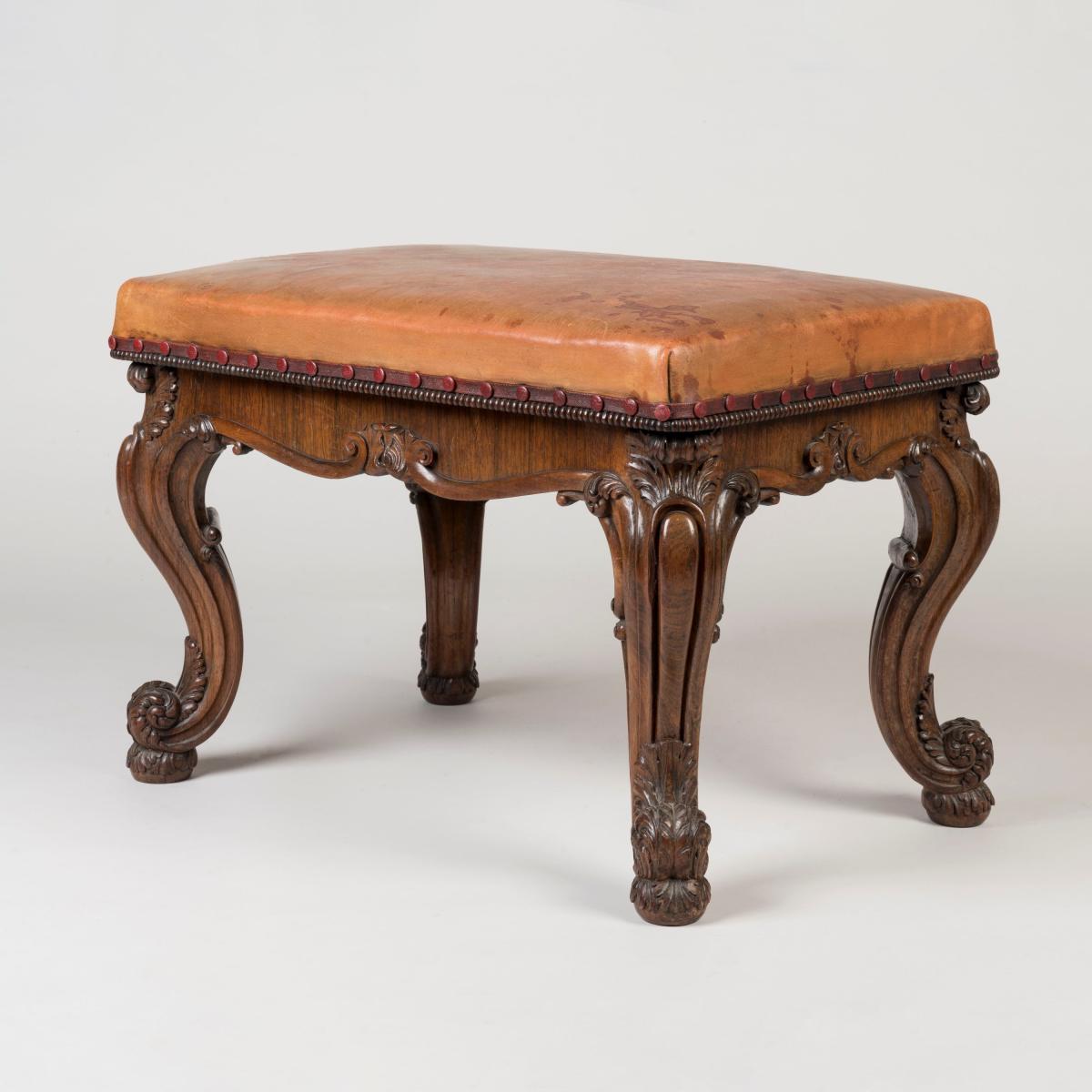
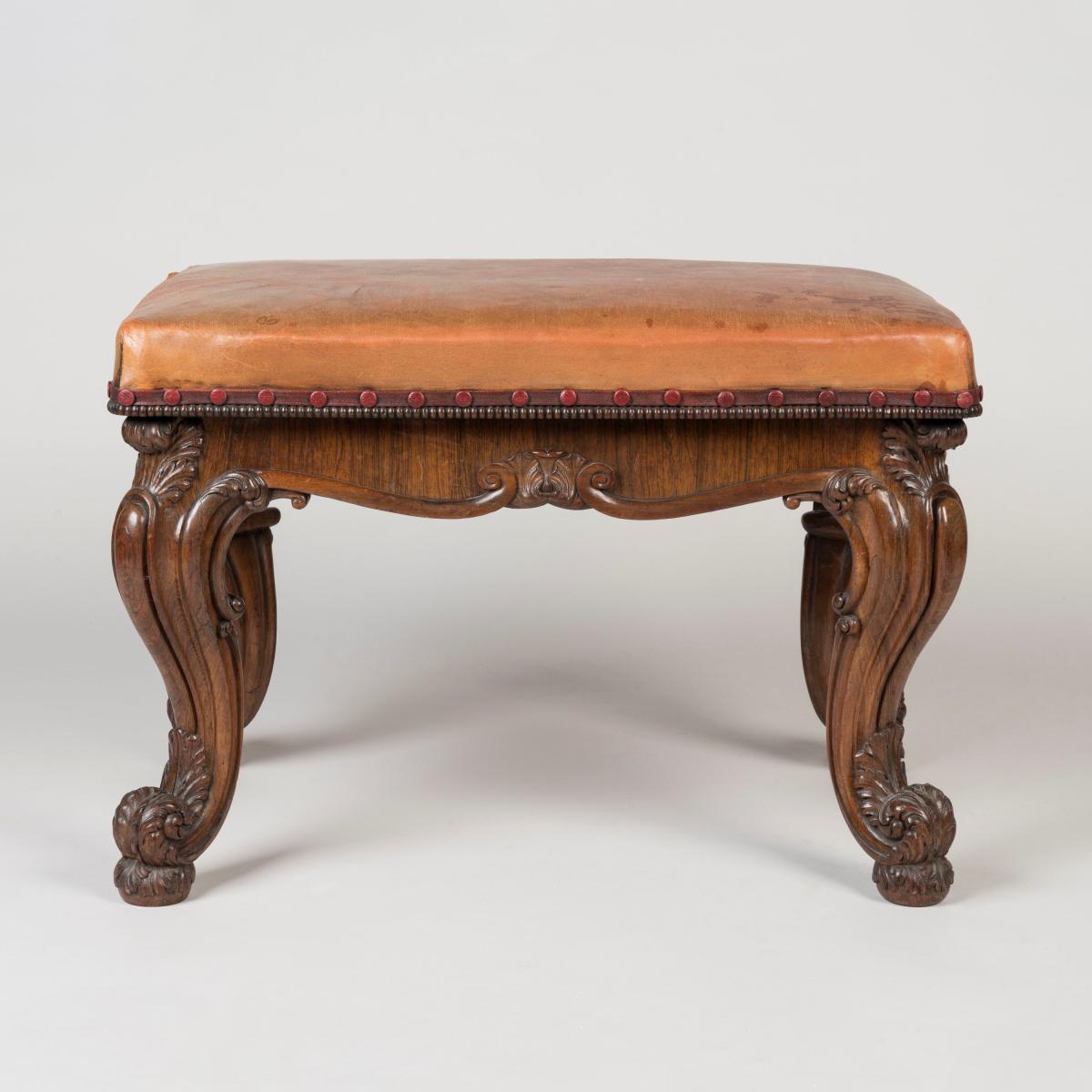
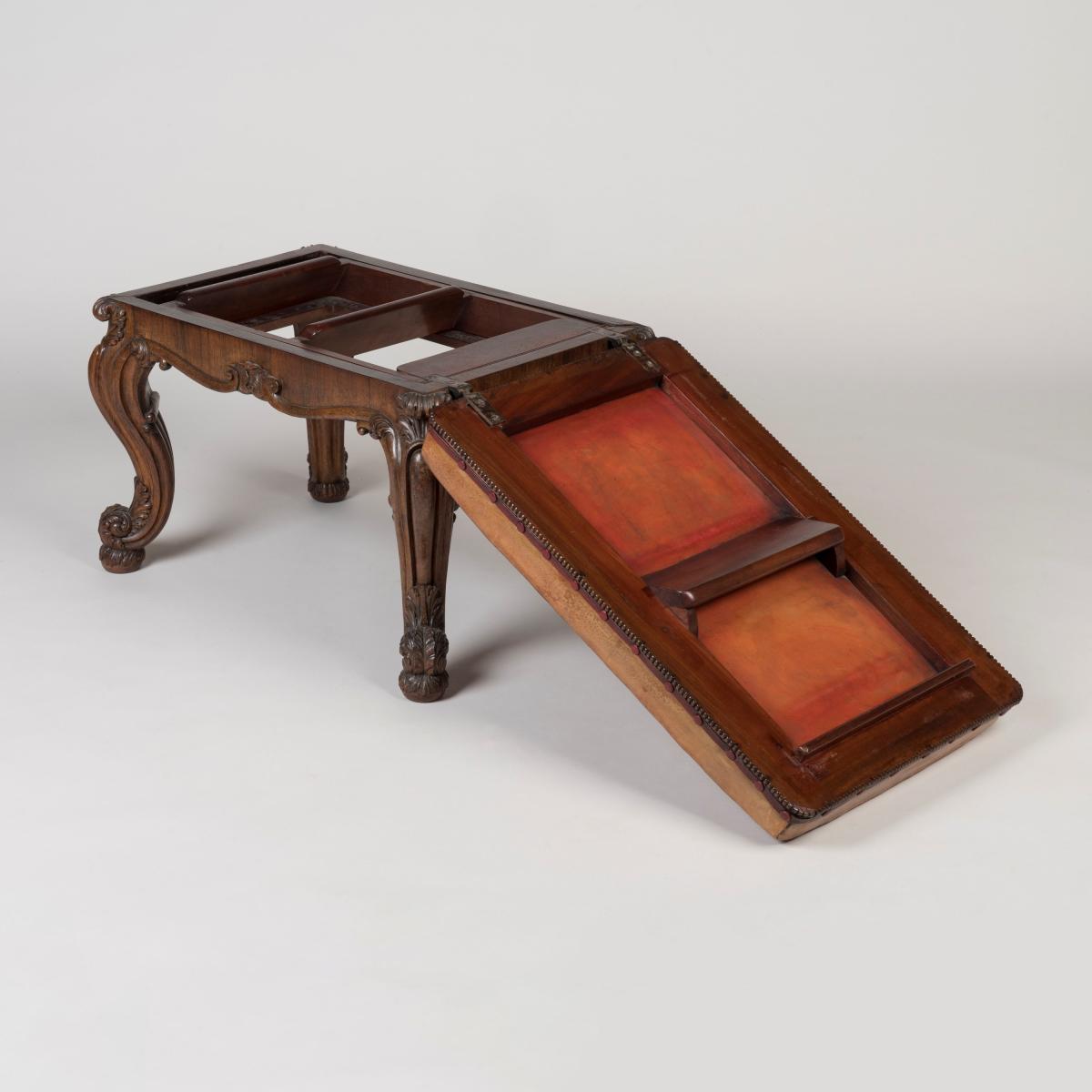
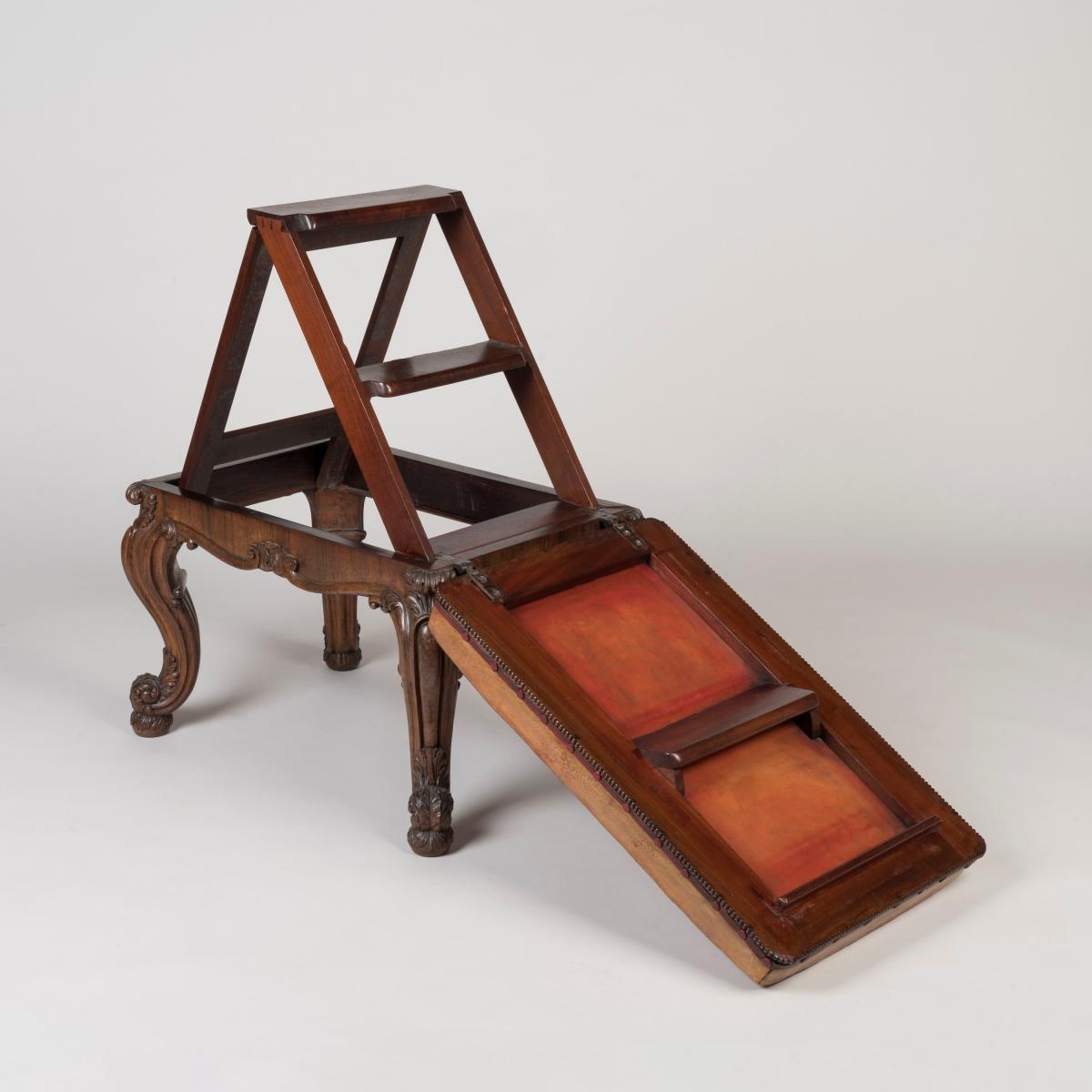
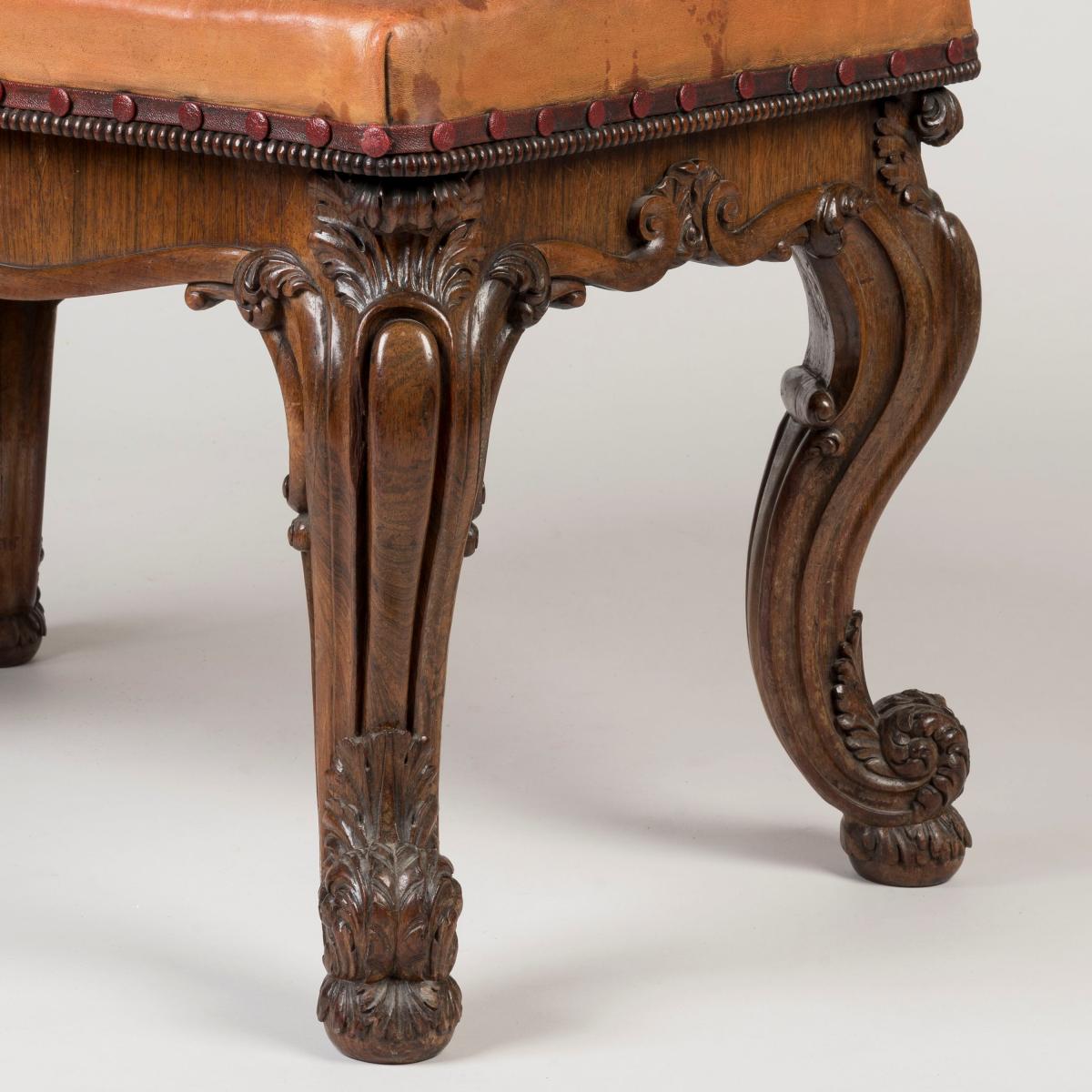
Price on application
This object includes complimentary, Insured Shipping / Delivery within the UK
This object is eligible for a Certificate of BADA Provenance
The BADA Standard
- Since 1918, BADA has been the leading association for the antiques and fine art trade
- Members are elected for their knowledge, integrity and quality of stock
- Our clients are protected by BADA’s code of conduct
- Our dealers’ membership is reviewed and renewed annually
- Bada.org is a non-profit site: clients deal directly with members and they pay no hidden fees
An Extraordinary Set of Three Rosewood Stools Firmly Attributed to Gillows.
One stool exhibiting metamorphic abilities and together with two identical stools, carved from rosewood with mastery and flair, supported on cabriole legs in a substantial rococo revival style, with acanthus leaf scrolled feet and boldly carved leafy motifs on the corners, the metamorphic stool with a hinged seat opening up to reveal trestle library steps; all with leather covered seats and beaded carved borders.
English, circa 1830
The distinctive neo-rococo carved legs on these stools can be seen on many of the drawings of room settings prepared in Gillows' Oxford Street workshop from about 1813-1830. Known and documented variations include a suite of furniture made for the 5th Earl Fitzwilliam, as well as furniture delivered to Whittington Hall.
Gillows of London and Lancaster was a highly renowned furniture-making firm that operated from the 18th century until its amalgamation in 1900. The founder of the Gillows dynasty, Robert (1704-1772), began as a provincial joiner and evolved into a successful businessman who founded his furniture-making business in 1730. His business expanded to include the direct import of quality West Indian timbers, especially the finest mahogany.
Robert's talents as both a cabinetmaker and innovative designer brought him early success. He expanded his Lancaster showroom adding another in London's Oxford Street, and brought his two sons, Richard & Robert, into the business. The clientele now included the Government, the aristocracy and the burgeoning middle classes. His furniture had gained its reputation for excellence of workmanship and materials employed, and coupled with his insistence on being at the cutting edge of design, kept the company to the fore throughout its 170-year history.
Gillows of London and Lancaster was the largest manufactory of furniture in England, and the fortuitous survival of the Gillows records and their Estimate Sketch Books show over 20,000 designs, which are preserved in the City of Westminster Library. Furniture made by Gillows is to be found in Royal collections and museums throughout the world.
Some hallmarks of Gillows furniture include the use of high-quality woods, such as mahogany and rosewood, as well as intricate carvings and elegant proportions. Their designs often incorporated neoclassical and Regency styles, with a focus on simplicity and elegance.
Literature:
Susan E Stuart. Gillows of Lancaster and London 1730-1840: Cabinetmakers and International Merchants: A Furniture and Business History. Antique Collector's Club 2008, p. 291 (pl. 308), for a related library table also carved from rosewood of comparable design.
Price on application
This object includes complimentary, Insured Shipping / Delivery within the UK
This object is eligible for a Certificate of BADA Provenance
Condition report
Excellent conditionStock number
9956The BADA Standard
- Since 1918, BADA has been the leading association for the antiques and fine art trade
- Members are elected for their knowledge, integrity and quality of stock
- Our clients are protected by BADA’s code of conduct
- Our dealers’ membership is reviewed and renewed annually
- Bada.org is a non-profit site: clients deal directly with members and they pay no hidden fees


